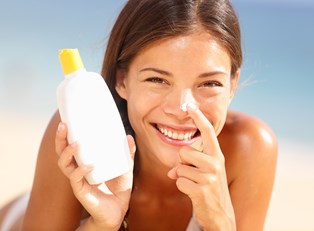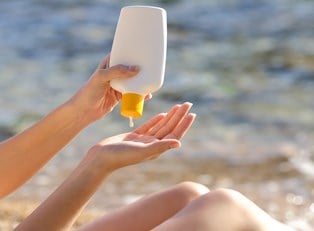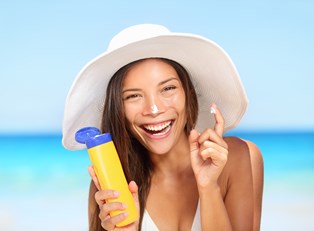Sunscreen is one of the most important substances you should have in your beauty arsenal because it protects you from developing sunspots, fine lines, and skin cancer. It is for these reasons that many people are becoming increasingly concerned with finding a reliable sunscreen. There are a number of different issues to consider when determining if your sunscreen is working.
What SPF Are You Using?
SPF is the measure of protection a sunscreen offers. To figure out what SPF level needed, you must estimate how long his or her skin can be in the sun before he or she starts to burn. For example, if a person's unprotected skin will burn in the daylight in about ten minutes, then if he or she were wearing SPF 15 sunscreen, he or she would be able to stay out in the sun for 150 minutes without being burnt. The SPF will directly affect the amount of time a person is able to stay in the sun by increasing their overall resistance to ultraviolet radiation. A higher SPF offers a greater amount of protection for a longer period of time. If you are not using the correct SPF for a certain situation, then you risk being burnt. It is not recommended to use an SPF higher than 50 in order to avoid excessive amounts of chemical exposure.
How Often Do You Reapply Sunscreen?
Another factor to remember is the frequency at which sunscreen is being applied. It’s recommended that you apply sunscreen at least 30 minutes before going out into the sun to give the sunscreen time to be properly absorbed into the skin, and then at least once every two hours following that. Sunscreen should also be reapplied after the skin is exposed to water. People with fairer skin will need to reapply sunscreen more often than those who are less prone to sunburns.
What Ingredients are Necessary in an Effective Sunscreen?
A sunscreen uses chemicals designed to absorb harmful radiation from the sun. They usually contain the chemicals avobenzone and benzophenone, both of which absorb UVR rays. It is important to look for sunscreens that will also absorb, or at least scatter, UVB rays as well. The chemical formulas for UVB protection vary wildly, as the most effective method of absorbing UVB rays has not yet been developed.
As long as a sunscreen is of the proper SPF, is applied at least once every two hours, and contains chemicals that will protect against both UVR and UVB rays, you will be protected from the sun while you enjoy the great outdoors.



